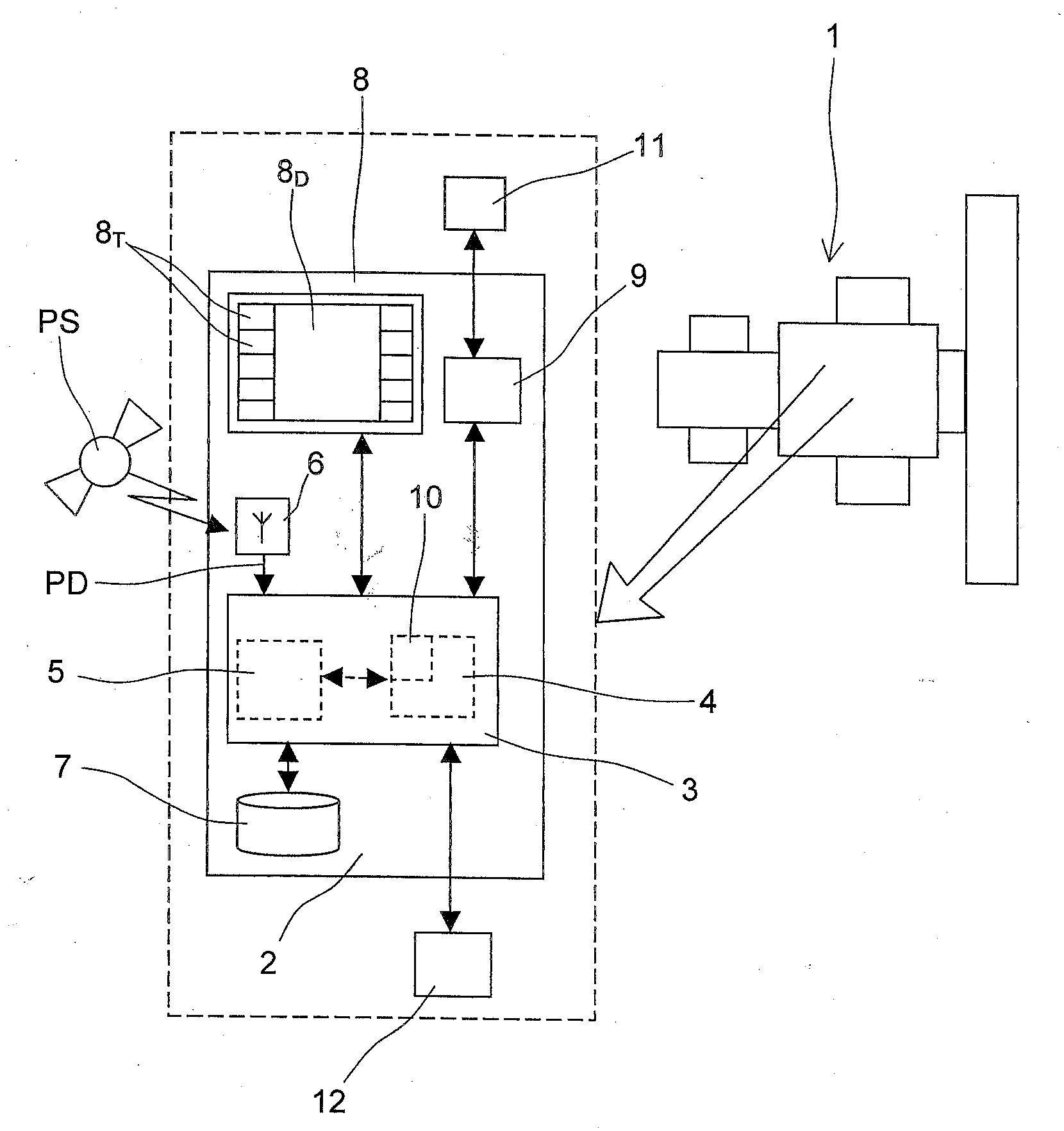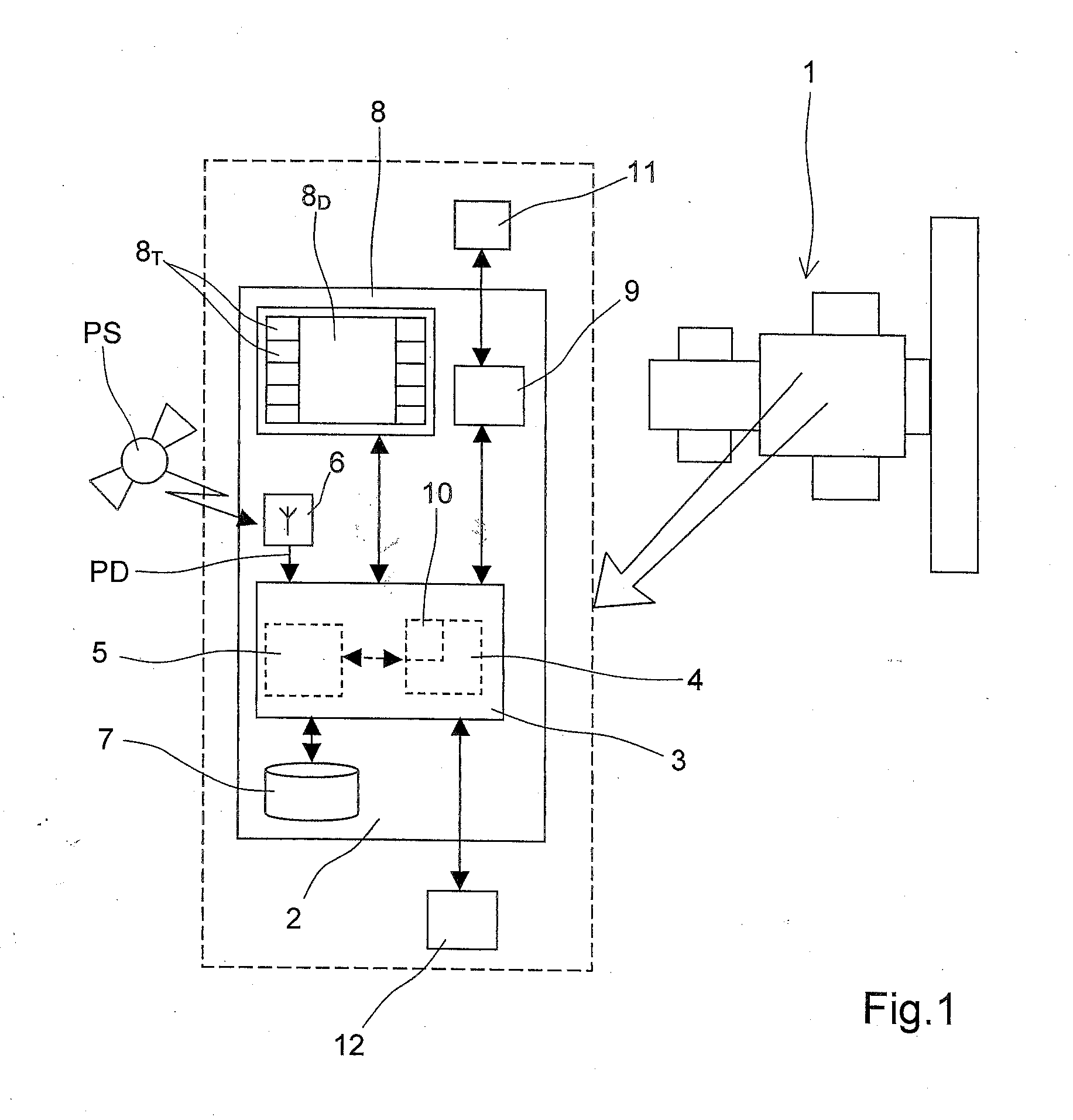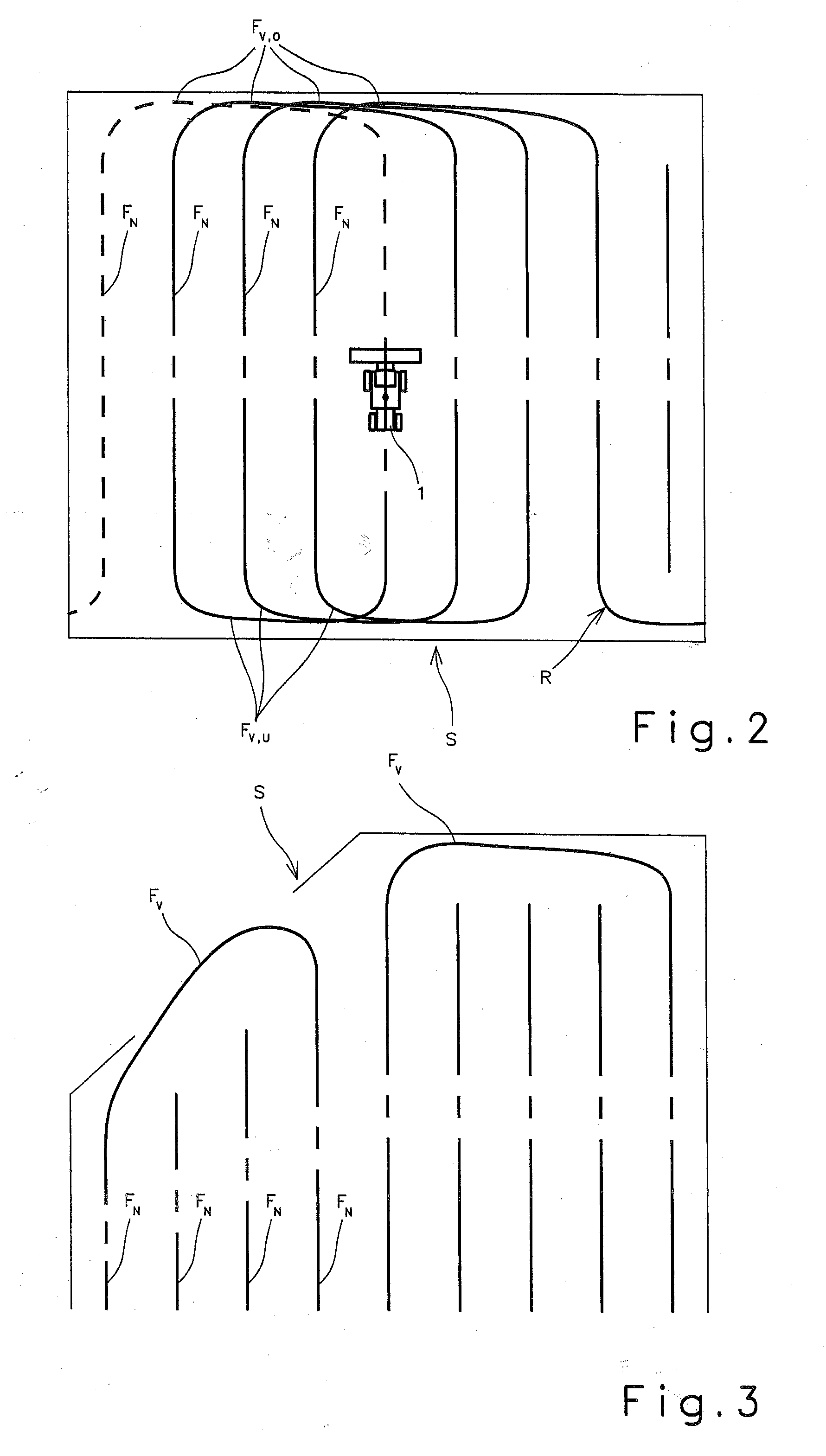Method for controlling an agricultural machine system
a technology of agricultural machinery and control system, which is applied in the direction of process and machine control, vehicle position/course/altitude control, instruments, etc., can solve the problems of inability to assume the full concentration of the driver, the amount of time available for performing work is usually limited, and the turning procedure of this type requires a great deal of practice and concentration
- Summary
- Abstract
- Description
- Claims
- Application Information
AI Technical Summary
Benefits of technology
Problems solved by technology
Method used
Image
Examples
Embodiment Construction
[0088]The agricultural machine system depicted in FIG. 1 is a combine harvester 1 that includes an inventive control system 2. The general layout and mode of operation of a combine harvester 1 are known to one skilled in the art, as are suitable conventional control systems. Therefore, only those components of control system 2 that are required to explain the present invention are depicted schematically in FIG. 1.
[0089]The essential components of control system 2 include a position determination device 6, e.g., a GPS receiver, which receives GPS signals from suitable position satellites PS. This is preferably a GPS receiver that operates in a corrected, satellite-based system, e.g., with DGPS or the like, in order to determine position as exactly as possible, preferably to within a few centimeters.
[0090]Control system 2 also includes a processor 3, on which a route planning system 4 and a headland management system 5 are implemented in the form of software modules. The basic design ...
PUM
 Login to View More
Login to View More Abstract
Description
Claims
Application Information
 Login to View More
Login to View More - R&D
- Intellectual Property
- Life Sciences
- Materials
- Tech Scout
- Unparalleled Data Quality
- Higher Quality Content
- 60% Fewer Hallucinations
Browse by: Latest US Patents, China's latest patents, Technical Efficacy Thesaurus, Application Domain, Technology Topic, Popular Technical Reports.
© 2025 PatSnap. All rights reserved.Legal|Privacy policy|Modern Slavery Act Transparency Statement|Sitemap|About US| Contact US: help@patsnap.com



